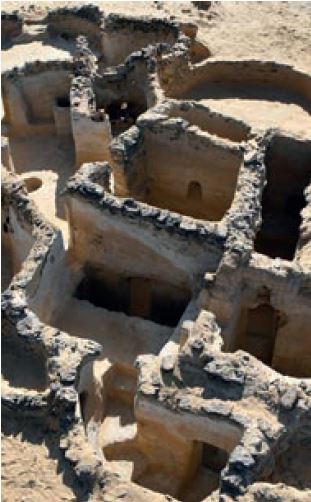The oldest monastery
Publish date 10-08-2021
The Qasr-El-Agouz site, Bahariya Oasis, in the Egyptian desert, was the focus of three excavation campaigns, starting in 2013. Investigations revealed six buildings, two of which were entirely excavated, built with blocks of basalt held together with mortar or raw clay bricks.
The oldest building and nucleus of the settlement seems to be the one called GQA1, dating back to the first half of the fourth century. A.D. It includes a church carved into the rocky hill, two bedrooms to which others were added in a second phase of occupation of the site, a refectory and a kitchen.
The GQA2 building, currently being excavated, turned out to be the oldest monastery in Egypt, with an organization halfway between a hermit and a cenobitic. It is in fact located in an isolated position, far from known settlements belonging to the same period, but the distribution of the buildings reveals the presence of a monastic community.
The GQA2 complex is in fact made up of some bedrooms, a warehouse and a kitchen. In a second phase of occupation, dating back to the V-VI century, a stable was added. Here, remains of plants, seeds and animal droppings were found. Finally in the VI-VII century. a warehouse and a kitchen belong.
Recently, archaeologists have found in this complex some evidence of the religious life that took place at the site. On the walls plastered with clay, writings made in yellow ink relating to verses from the bible in Greek emerged. In addition, ostraka with Greek writings emerged.
These findings, which are added to others already analyzed as fragments of glass and clay vases, reveal the relationship of the monastery with the Byzantine environment.
Overall, the Qasr-El-Agouz site, located on the access road to the Nile Valley, is part of the first spread of Christianity in this region. Like other recent finds, this monastic complex also has rooms for the production and consumption of wine and evidence of breeding, especially goat.
In any case, the continuation of the excavations in the coming years may reserve us other surprises.
NP Aprile 2021
Agnese Picco








